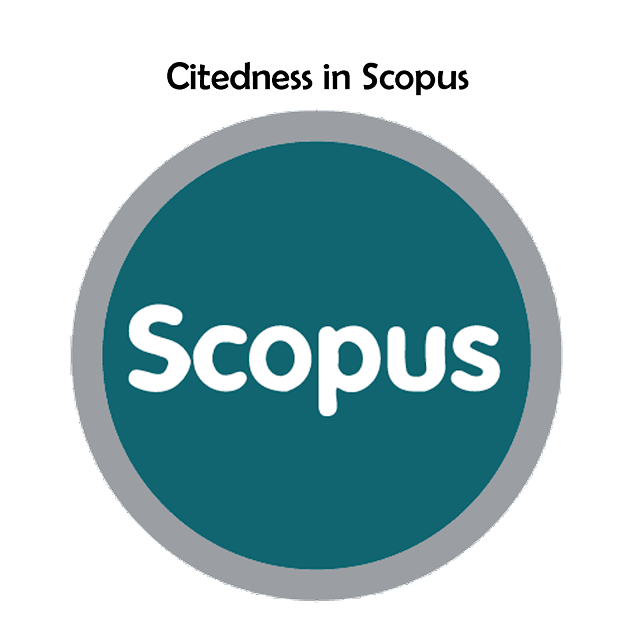Forensic storage framework development using composite logic method
Helmi Rachman(1*); Bambang Sugiantoro(2); Yudi Prayudi(3);
(1) Universitas Islam Idonesia
(2) UIN Sunan Kalijaga Yogyakarta
(3) Universitas Islam Indonesia
(*) Corresponding Author
AbstractIncreasing number of information technology users allows possibility for crimes to take advantage of information technology to continue increasing either directly and indirectly. Criminals often use computer devices to commit crimes. This is a major concern so that the need for handling digital evidences becomes significantly urgent. Therefore, a forensic storage framework is required for managing digital evidences. This framework is designed by applying the composite logic method to determine role model of each variable or the initial pattern of the stages to be collaborated. Composite logic produces a role model that is to generate patterns in order to achieve the same goal. This method collaborates framework for handling the pre-existing hdd, ssd, and vmware to be in turn combined into a forensic storage framework. Based on the results of the test, this study proposes a new framework called forensic storage framework which comprises of four main stages, namely preparation, collection, analysis and report. The advantage of this framework is that it can be used to handle digital evidences in four storages which are SSD, HDD, VmWare, and cloud.
KeywordsStorage Forensics; Composite Logic; Framework
|
Full Text:PDF |
Article MetricsAbstract view: 513 timesPDF view: 284 times |
Digital Object Identifier https://doi.org/10.33096/ilkom.v13i1.811.58-66 https://doi.org/10.33096/ilkom.v13i1.811.58-66
|
Cite |
References
F. Cohen, Two models of digital forensic examination, 4th Int. Work. Syst. Approaches to Digit. Forensic Eng. SADFE 2009, vol. 1, no. 3, pp. 4253, 2009, doi: 10.1109/SADFE.2009.8.
M. R. Gregg Gunsch, Clint Carr, An Examination of Digital Forensic Models, 4th Int. Work. Syst. Approaches to Digit. Forensic Eng. SADFE 2009, vol. 1, no. 3, pp. 4253, 2009, doi: 10.1109/SADFE.2009.8.
A. Alenezi, R. K. Hussein, R. J. Walters, and G. B. Wills, A Framework for Cloud Forensic Readiness in Organizations, Proc. - 5th IEEE Int. Conf. Mob. Cloud Comput. Serv. Eng. MobileCloud 2017, pp. 199204, 2017, doi: 10.1109/MobileCloud.2017.12.
P. Tobin, N.-A. Le-Khac, and T. Kechadi, Forensic Analysis of Virtual Hard Drives, J. Digit. Forensics, Secur. Law, vol. 12, no. 1, 2017, doi: 10.15394/jdfsl.2017.1438.
S. Perumal, Digital Forensic Model Based On Malaysian Investigation Process, IJCSNS Int. J. Comput. Sci. Netw. Secur., vol. 9, no. 8, pp. 3844, 2009, doi: 10.1504/IJESDF.2010.033780.
O. Takwa, C. R. Belgacem, and D. Adel, A New Digital Investigation Frameworks Comparison Method, Int. J. Comput. Tech. -, vol. 3, no. 4, pp. 610, 2016, [Online]. Available: http://www.ijctjournal.org.
V. Baryamureeba and T. Florence, The Enhanced Digital Investigation Process Model, Asian J. Inf. Technol., vol. 5, pp. 790794, 2004.
R. Mislan, J. Goldman, S. Debrota, M. Rogers, and T. Wedge, Computer Forensics Field Triage Process Model, J. Digit. Forensics, Secur. Law, pp. 2740, 2006, doi: 10.15394/jdfsl.2006.1004.
S. Garfinkel et al., Bringing Science to Digital Forensics with Standardized Forensic Corpora By Bringing science to digital forensics with standardized forensic corpora, 2009, doi: 10.1016/j.diin.2009.06.016.
K. Kent, S. Chevalier, T. Grance, and H. Dang, Guide to integrating forensic techniques into incident response, 2006, doi: 10.6028/NIST.SP.800-86.
R. Inggi, B. Sugiantoro, and Y. Prayudi, Penerapan System Development Life Cycle ( Sdlc ) Dalam ( Sdlc ) Dalam Mengembangkan, SemanTIK, vol. 4, no. 2, pp. 193200, 2018, doi: 10.5281/zenodo.2528444.
N. Lizarti et al., PENERAPAN COMPOSITE LOGIC DALAM MENGKOLABORASIKAN, no. March 2018, 2017, doi: 10.14421/jiska.2017.21-04.
M. E. Alex and R. Kishore, Forensics framework for cloud computing, Comput. Electr. Eng., vol. 60, pp. 193205, 2017, doi: 10.1016/j.compeleceng.2017.02.006.
Y. D. Rahayu and Y. Prayudi, Membangun Integrated Digital Forensics Investigation Framework (Idfif) Menggunakan Metode Sequential Logic, Semin. Nas. Teknol. Inf. dan Komun., no. March, pp. 20899813, 2014.
M. N. Al Jumah, B. Sugiantoro, and Y. Prayudi, Penerapan Metode Composite Logic Untuk Perancangan Framework Pengumpulan Bukti Digital Pada Media Sosial, Ilk. J. Ilm., vol. 11, no. 2, pp. 135142, 2019, doi: 10.33096/ilkom.v11i2.442.135-142.
D. Strber, G. Taentzer, S. Jurack, and T. Schfer, Towards a distributed modeling process based on composite models, Lect. Notes Comput. Sci. (including Subser. Lect. Notes Artif. Intell. Lect. Notes Bioinformatics), vol. 7793 LNCS, pp. 620, 2013, doi: 10.1007/978-3-642-37057-1_2.
S. Lim, B. Yoo, J. Park, K. D. Byun, and S. Lee, A research on the investigation method of digital forensics for a VMware Workstations virtual machine, Math. Comput. Model., vol. 55, no. 12, pp. 151160, 2012, doi: 10.1016/j.mcm.2011.02.011.
Y. Y. Teing, A. Dehghantanha, K. K. R. Choo, and L. T. Yang, Forensic investigation of P2P cloud storage services and backbone for IoT networks: BitTorrent Sync as a case study, Comput. Electr. Eng., vol. 58, no. 2017, pp. 350363, 2017, doi: 10.1016/j.compeleceng.2016.08.020.
K. N. Mahajan, S. S. Chafale, and V. G. Mulik, International Journal of Advance Engineering and Research Importance of Forensic Image of Hard Disk Using Different Forensic Tools By Preserving The Integrity of Digital Evidence, pp. 272279, 2018.
N. Reddy, Solid State Device ( SSD ) Forensics, doi: 10.1007/978-1-4842-4460-9.
Refbacks
Copyright (c) 2021 Helmi Rachman, Bambang Sugiantoro, Yudi Prayudi

This work is licensed under a Creative Commons Attribution-ShareAlike 4.0 International License.







